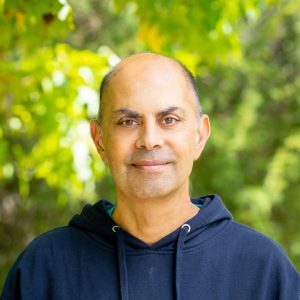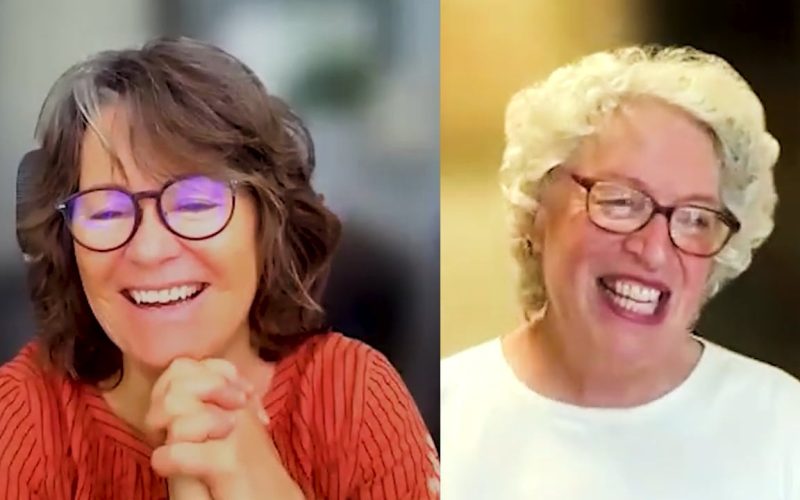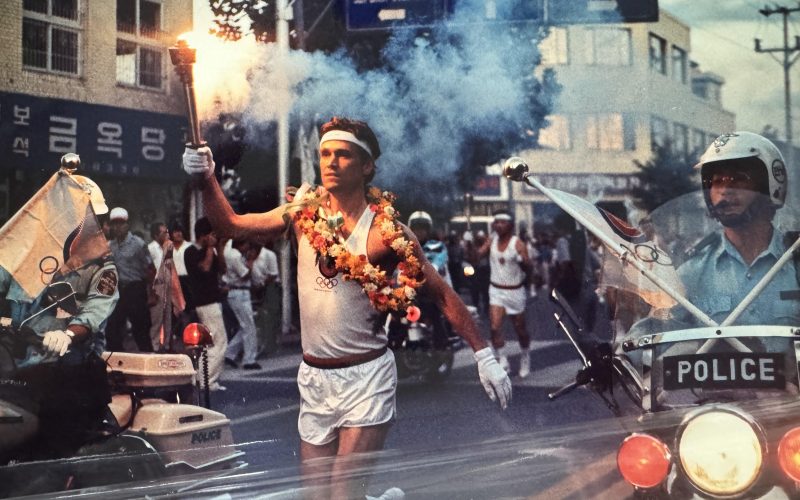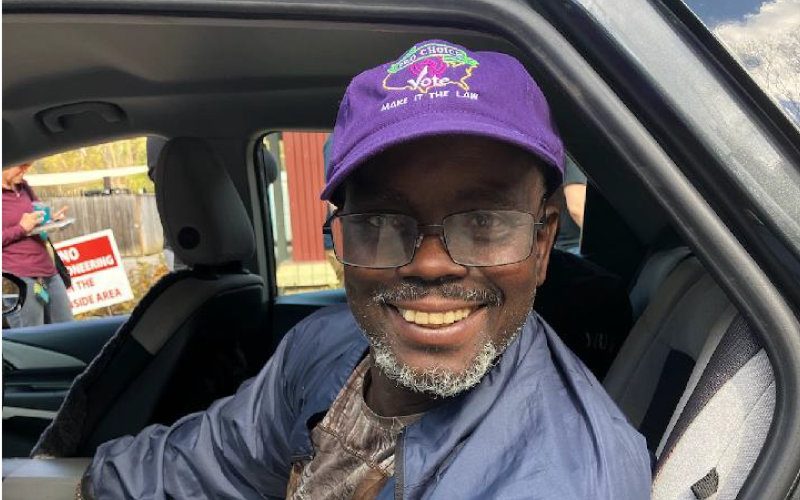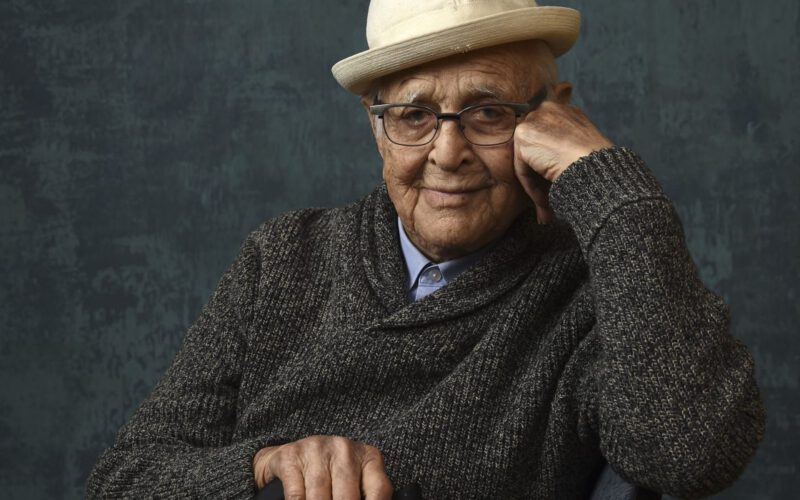We spoke with Garden for Wildlife CEO Shubber Ali about developing an e-commerce site for native plants, how the foundation works with younger and older Americans alike, and how his own garden of native plants continues to bring him joy.
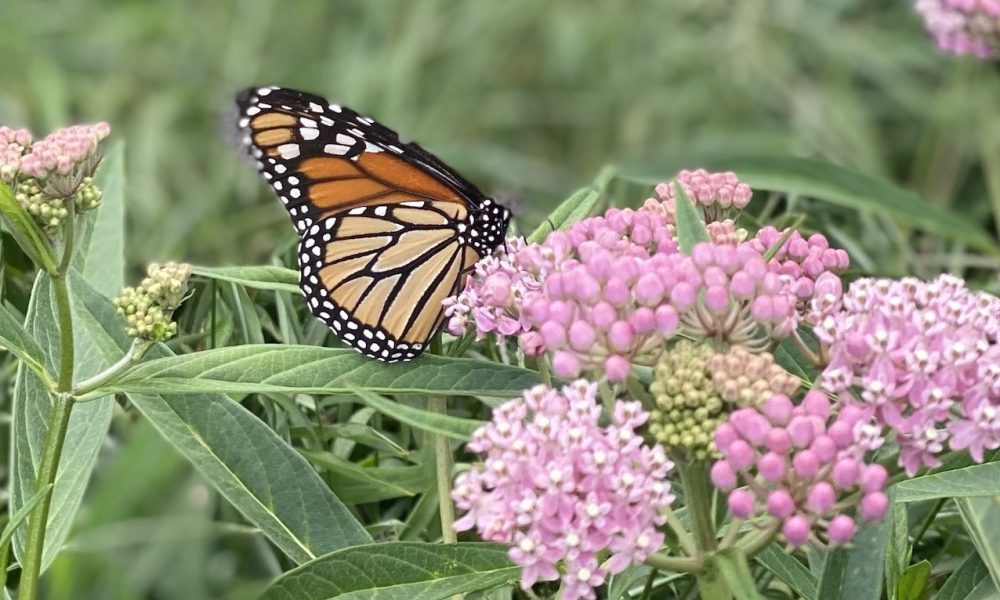
On the benefits of growing native plants
I was on a lot of conference calls when I worked at Accenture. During these calls, I dug a pond in my front yard and then filled it. And now, around the pond are some of the very first flowers sold by Garden for Wildlife.
Native plants are really good for the environment. They sequester carbon. Their roots go as far as 15 feet deep. When you pull up grass turf, it’s only this deep and then it’s solid dirt. So when it rains, the water doesn’t get absorbed; it runs down the grass and into the storm drains and up to the Chesapeake, which gets polluted. Montgomery County, where I live, has a program called Rainscape. It gives homeowners $7,500 to put in a native plant garden to help absorb runoff.
And every year, the plants come back. I don’t have to do anything. Nature doesn’t need a lot of help. A little nudge in the right direction.


On growing native plants in cities
If you don’t have a gigantic garden, that’s fine. Get some big pots, put them on your balcony at your apartment. It still works.
A friend of mine in Chicago got a loft in the city and he’s like, why would I put plants here? There’s nothing in the city. And I’m like, trust me on this one, I’ll even buy the plants for you. And then, if I’m right, you can pay me for that. So he put three plants in and got a planter little window box on his balcony a month later. He texted me, saying, dude, I have a monarch on my balcony.
Wildlife knows where to go. The highline, right in New York City, was an abandoned railroad track. Now it’s a massive native garden and all kinds of species go there that haven’t been seen in the city in forever. They’re back.
On how Ali got involved with Garden for Wildlife
I’ve actually been a supporter of the National Wildlife Federation (NWF) since 1994. I just found my old membership card and feel like this is a little bit of proof that we live in a simulation because too many things seem to be coming together to make this happen.
The organization sent out an email to check out the book, Nature’s Best Hope, by advisor Doug Tallamy. And after reading the book, I realized I couldn’t find native plants anywhere. I spent three hours at Lowe’s Googling every single plant there only to find out that every single one was an invasive species. I had no idea.
On creating a business model
The problem is that there are 100 million gardeners out there who don’t know about native plants and when they do learn about them, they can’t find them. I reached out to the head of innovation and marketing at NWF and said, it’s not enough to educate people because there are still too many people who don’t have access to it.
The net result of our work with them was a business plan and e-commerce site built on this really cool database they already had. It contained every single native plant, free shrub, and flower at the zip code level in the US. We used that power in the system. We took that asset and created an ecommerce site. Our team at Accenture ended up building it for them using Salesforce and Shopify.
When people go to the site, it starts by asking for your zip code. Then it only shows you what’s native to where you live. You click buy, just like any other ecommerce business, and they show up on your doorstep.

On getting college students to appreciate the tangible impact of gardens
Generation Z calls themselves Generation Dread because everything they hear is how bad the world is. Like, we have dumped plastic in the Pacific. We’ve put carbon in the atmosphere. We have polluted the rivers. We have created massive droughts from a combination of climate change and too many people living in the wrong places. We now have fires that are destroying towns. The list never ends, right?
I totally get that. Of course I do. I grew up in the shadow of a nuclear weapon. So for me, it was a different awful, but it wasn’t as tangible as it is today. Because now you’re seeing it around you. That was just this kind of existential threat.
For most of the issues I mentioned, you can’t see your impact. You can use a recyclable shopping bag, but you won’t see a difference in the Pacific Ocean. You can drive a Tesla, but you won’t see the climate changing because of your choice. You just know it’s the right thing to do.
What the students really liked about this was you can just go and get a few native plants. Take one, stick it in your yard, and within a year, you’re guaranteed to see a difference. You will start to see things coming to your yard that weren’t there before. It’s easy to see your impact.
On intergenerational action through gardening
Gardening is a great way to create connections between generations, which goes back to why Garden for Wildlife works with Third Act. Grandparents gardening with grandkids or older parents gardening with their kids.
Wild Vision is one of the things I think would be really good to find a way to get Third Act to work with college students to create the gardens. But then also help maintain them because the way to keep the creation between them, which is always good for lots of reasons. It creates that kind of ongoing gardening activity.

On joy in gardening and climate activism
There’s a book called The Nature Fix that came out in 2017. Florence Williams went out and documented different research projects going on around the world that are putting the science behind what people have known anecdotally: the connection between exposure to nature and mental and physical wellness. They found that the Japanese tradition of forest bathing lowers blood pressure and cortisol. It doesn’t just lower it for a day or a month; it remains low.
An experiment in Colorado last year played birdsong for some hikers, but not for others. And this showed a measure difference in their happiness levels. Birdsong is really good for you. There’s actually a Swedish word, Gökotta, that literally means waking up, going out, and listening to birdsong.
When we first moved here, we had crows, doves, house finches, cardinals, and all the usuals. Now I go on my back porch and we have 15 different species of birds, some of which I’ve never seen in my life. It’s just like a symphony. It’s incredible.
On the bringing home the eastern bluebird
Here’s a bird called the eastern Bluebird. It is beautiful. It’s a certain shade of blue I’ve never seen anywhere else. And then it’s got like a reddish rusty underside, almost like a robin. Then it’s brilliant blue on the outside. And that first year we put the native plants, I saw one. Then my daughter and I were like, we want to get more of these.
So we built a birdhouse specific to Eastern Bluebirds because they don’t use perches. They actually use the claws like they grab you on the bark. So you cut grooves in the front of the birdhouse instead and they can grab that and then go in. We built eight of them.
On the very first day, we had eight pairs of bluebirds move in one pair into each house that first day because they realized there was a food source here and that there was a place that they could raise their young. And now we have bluebirds every year.

Buy a native plant and support Third Act
Third Act will receive 15% of the total sales from your purchases with them through next spring. Using this link will assure the sale is credited to us.
Learn More